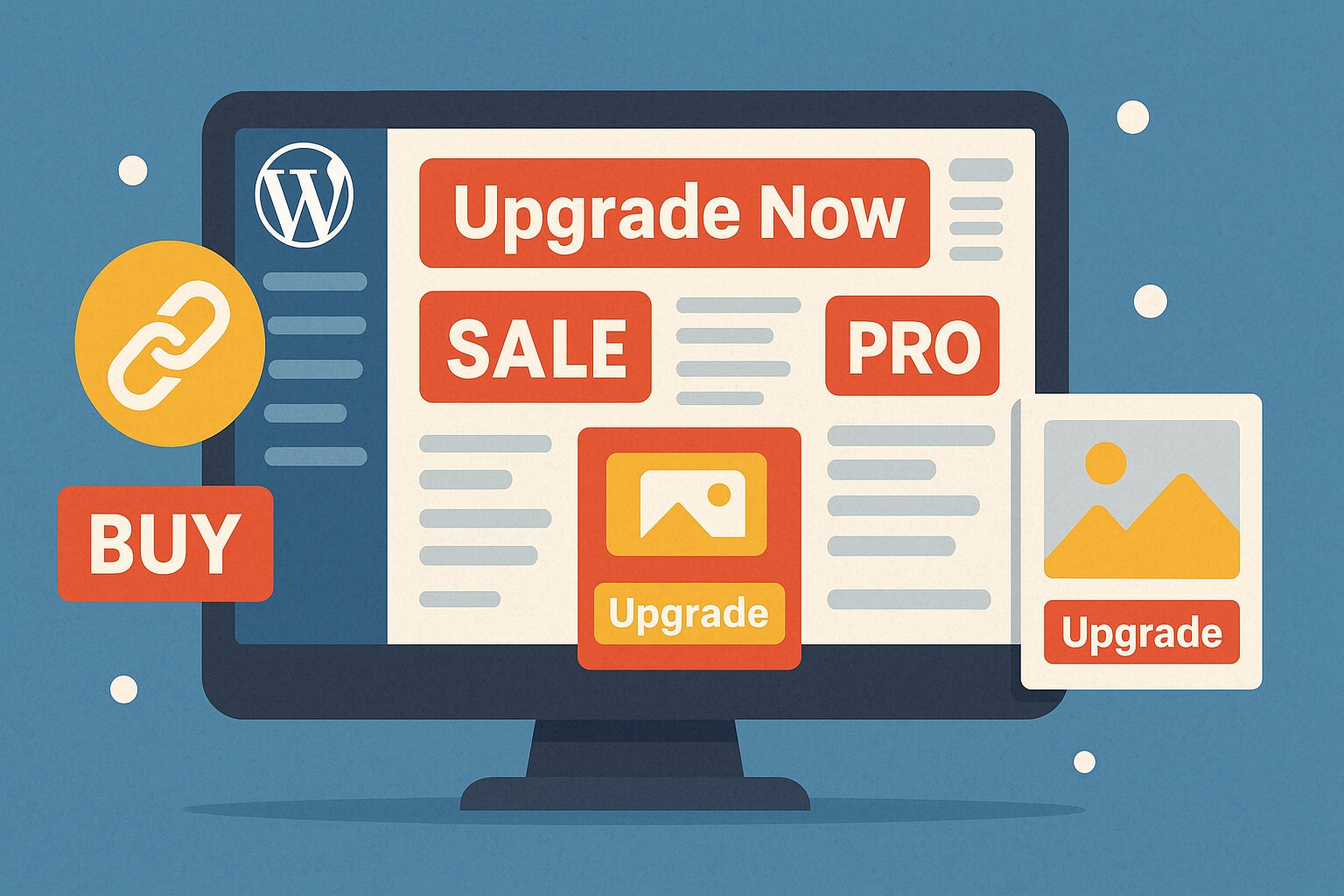Why Are WordPress Plugins Filled with Spammy Links and Images?

Intro:
If you’ve used WordPress for any amount of time, you’ve likely noticed a frustrating trend: plugins—both free and paid—often come packed with spammy links, self-promoting banners, and unnecessary branded images. But why does this happen, and what can you do about it?
1. The Rise of “Freemium” and Aggressive Marketing
Many plugin developers rely on the freemium model: offering a basic version of the plugin for free and upselling advanced features. To drive those conversions, developers often embed promotional links and upgrade banners directly into the dashboard or plugin output.
The result? Even paid versions sometimes continue to advertise other products from the same developer, essentially turning your admin area into a billboard.
2. Backlink Farming for SEO Gains
Another reason developers embed links—often dofollow—is to boost their own search engine rankings. By injecting links into your front-end (footer credits, admin pages, etc.), they benefit from your site’s authority without your explicit consent.
This isn’t just an eyesore—it’s bad SEO hygiene for your site and potentially exploitative.
3. Branding Gone Too Far
While it’s reasonable for plugin authors to want credit, some take branding to an extreme. You’ll find logos, promotional widgets, and even persistent notices plastered throughout your admin panels or front-end.
For site owners trying to maintain a professional appearance, this feels invasive and unprofessional.
4. Paid Doesn’t Always Mean Clean
One would expect that upgrading to a premium plugin would eliminate the spam. Unfortunately, some developers continue to include promotional content even after payment. Why? Because they view every install as marketing real estate—not just a user tool.
5. Lack of Standards and Oversight
Unlike the Apple App Store or Chrome Web Store, the WordPress plugin ecosystem has limited enforcement when it comes to advertising practices. Even the Plugin Review Team at WordPress.org focuses more on security and code quality than intrusive marketing.
This means developers can get away with shady practices for a long time—especially if users don’t complain.
6. How to Fight Back
- Leave reviews: Expose bad behavior by calling it out publicly in plugin reviews.
- Contact the developer: Sometimes, they’ll remove spammy elements if enough users complain.
- Use filters or custom CSS: You can often hide branding or ads from the admin area.
- Support ethical developers: Reward creators who respect your dashboard and front-end.
Final Thoughts
The WordPress community thrives on openness and contribution—but that doesn’t give developers a free pass to hijack your website for their own marketing. Whether you’re using a free or paid plugin, you deserve clean, professional tools—not spam disguised as features.

















Add your first comment to this post
You must be logged in to post a comment.